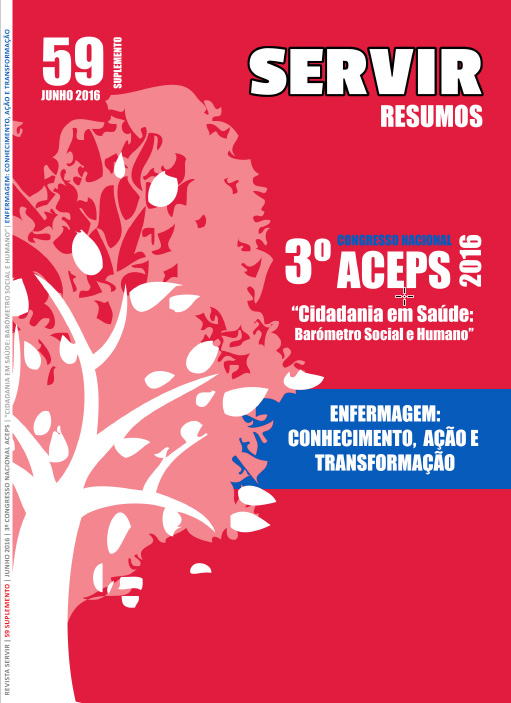The health surveillance and decayed, missing and filled teeth index in children
DOI:
https://doi.org/10.48492/servir0259.23174Palabras clave:
Oral Health, dmtf/DMFT Index, ; ChildrenResumen
Introduction
Oral diseases are a major public health problem because they affect much of the population, particularly, children at early ages (DGS, 2008).
Objectives
Evaluate the dmft/DMFT index in children in pre-school and school age;
To analyze the health of children (health surveillance and oral hygiene) and eating habits.
Methods
Quantitative, descriptive, exploratory and observational study in a non-probabilistic convenience sample consisting of 222 children (54,95% female and 45,05% male), between 3 and 8 years old, attending kindergartens and schools of the 1st cycle basic education of Sátão county.
Data collection was conducted through a questionnaire on health surveillance and behavior of children, answered by their parents. The observation of mouth/teeth for determining the dmft/DMFT index (Teeth index, decayed, missing and filled in the primary dentition / Teeth Index Decayed, Missing, and Filled in the permanent dentition) met the diagnostic criteria of the World Health Organization (WHO, 1997).
Results
Health surveillance in children was 98,2% (100% boys and 96,7% girls) of which 93,7% was oriented on health and oral hygiene; The average presence of caries was 1,10 per child and 61,9% of children show no decay. It was found that children with health problems are showing greater DMFT with statistically significant difference (p=0,020), as well as children who take medication (p=0,009). The DMFT index is influenced by visits to the dentist, taking systemic fluoride, caries perception in children by parents, children brushing teeth alone, toothache, bleeding gums, parental knowledge of the influence of food and the presence of bacteria and oral hygiene of parents.
Conclusions
In the child health surveillance visit, parents reported that in 56,8% of cases the nurse did not notice the child’s mouth. The results suggest the need for greater intervention of nurses in monitoring and promoting oral health of children.
Descargas
Descargas
Publicado
Cómo citar
Número
Sección
Licencia
No intuito de promover a livre circulação do conhecimento, a Servir funciona em regime de acesso livre (open access). Todo o seu conteúdo está disponível e protegido sob a licença Creative Commons (CC BY 4.0).
A revista permite o auto-arquivo em repositórios institucionais de todas as versões, podendo ficar imediatamente disponíveis.






